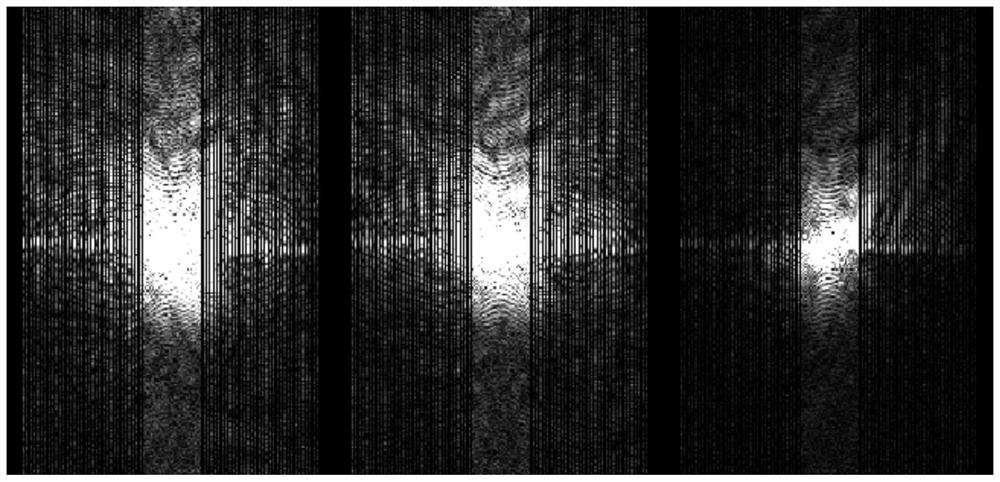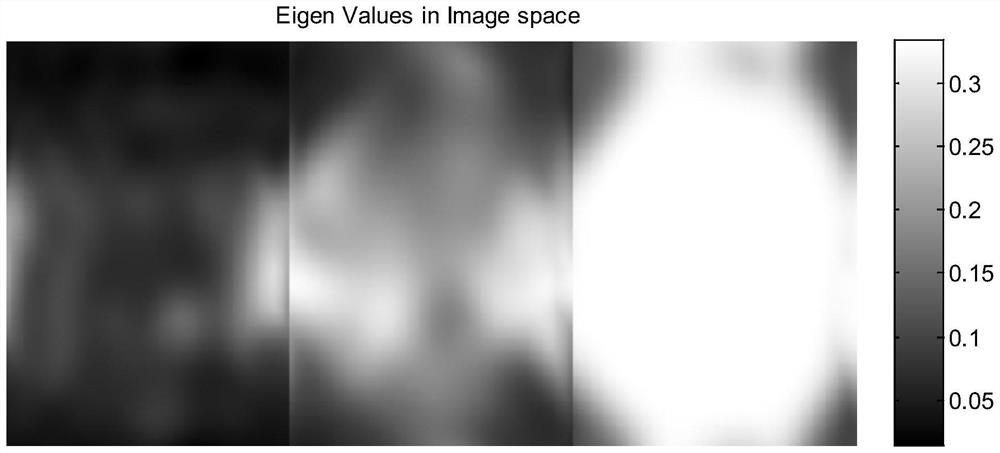MRI iterative self-calibration parallel imaging algorithm based on singular value decomposition
A singular value decomposition and self-calibration technology, which is applied in the direction of using nuclear magnetic resonance imaging system for measurement, magnetic resonance measurement, and magnetic variable measurement, can solve problems such as poor image quality and low signal-to-noise ratio of GRAPPA algorithm
- Summary
- Abstract
- Description
- Claims
- Application Information
AI Technical Summary
Problems solved by technology
Method used
Image
Examples
Embodiment Construction
[0036] Such as figure 1 As shown, a kind of MRI iterative self-calibration parallel imaging algorithm (SSCPIiT for short) based on singular value decomposition of the present invention comprises the following steps: (1) memory pre-allocation: (2) read K space data; (3) construct calibration matrix; (4) The calibration matrix and K-space data enter the GPU; (5) Calculate the sensitivity spectrum; (6) CG iteratively obtain the complete K-space; (7) Image reconstruction; (8) The reconstruction result flows back to the CPU. The specific calculation method is as follows.
[0037] (1) In the SPGR and DESPGR sequences, Cartesian acquisition is used to realize magnetic resonance scanning; the present embodiment sets a central calibration line at the center of K space, wherein the central calibration line adopts a full-acquisition acquisition mode, and is interlaced sampling from the center to both sides, and The 2x speed SENSE is the same, except that the center needs part of the ful...
PUM
 Login to View More
Login to View More Abstract
Description
Claims
Application Information
 Login to View More
Login to View More - R&D
- Intellectual Property
- Life Sciences
- Materials
- Tech Scout
- Unparalleled Data Quality
- Higher Quality Content
- 60% Fewer Hallucinations
Browse by: Latest US Patents, China's latest patents, Technical Efficacy Thesaurus, Application Domain, Technology Topic, Popular Technical Reports.
© 2025 PatSnap. All rights reserved.Legal|Privacy policy|Modern Slavery Act Transparency Statement|Sitemap|About US| Contact US: help@patsnap.com



